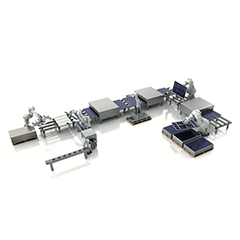The power sector is undergoing a global transformation. Over the past decade, the costs of renewables have dropped substantially, solar power by as much as 80 percent. With the comprehensive knowledge and broad experience, Stäubli makes an important contribution to the PV industry and the vision of a more sustainable future.
Renewable energy generation keeps on expanding steadily with increasing capacities of solar, wind and hydro. Whereas solar energy has been proven to be the most economic or cost efficient and effective, it leads with a growth of 135 GW in 2020. The worldwide installed capacity of photovoltaics (PV) runs up to about 755 GW, of which around 50 percent rely on Stäubli’s PV connector portfolio. This pioneer and inventor of reliable and powerful PV connectors has been active in the PV industry since 1995 and has launched the first PV connector in 1996 named MC3, after the company name Multi-Contact at that time.
Ever since, the technical experts of the former Multi-Contact, today Stäubli, have invested in research and development to bring the best electrical connectors to the PV industry for safe and long-term operation. In the course, the follow-up model MC4 was introduced to the market in 2002 and has set the benchmark in the PV connector world due to its outstanding characteristics for quality product and dependable performance.
Small components, big impact
Today, photovoltaic installations have become extremely cost driven. In a tough financial climate, it’s quite a challenge to find the optimal balance of CAPEX and OPEX. The PV industry is continuously looking for higher efficiency and lower production costs. Traditionally, this quest has centered on cutting the cost and improving the performance of big-ticket items such as solar panels, inverters and trackers. One area that is commonly overlooked is electrical balance of system (eBoS) components such as connectors and cabling. But the smallest component can be relevant.
Recent studies suggest that it is crucial for project owners to focus on these components and not only on modules and inverters, which represent the largest portion of CAPEX. Many field surveys of research institutes and technical advisers as well the experience of many projects owners all over the globe show that technical failures or issues with eBos components show a high frequency of occurrence and can have the biggest impact for economic losses in PV assets. Root cause for this is either lack of awareness about the importance of these components and/or the attempt to lower CAPEX by reducing asset costs for eBoS components and thus choosing low-quality products or cheap workman.



























